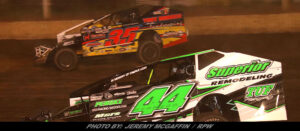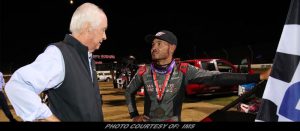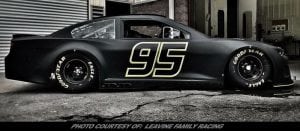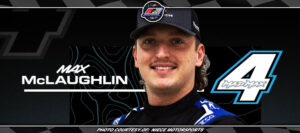

Column By: REID SPENCER / NASCAR – TALLADEGA, AL – Four days after Joey Logano took the checkered flag at Richmond International Raceway, his victory at the .75-mile short track lost much of its luster.
Disappointed by a penalty that took away the primary benefits of winning the race, Logano nevertheless was forthright in confronting the situation head-on when he talked to reporters on Friday morning at Talladega Superspeedway.
During detailed teardown and inspection at its research-and-development center in Concord, N.C., NASCAR found a problem with the rear suspension on the race-winning No. 22 Team Penske Ford car. Specifically, the truck trailing arm spacer wasn’t mounted flush against its mating surface, leaving a gap of roughly 1/32 of an inch.
That may not seem like much, but the rear end has been a point of particular emphasis with NASCAR for the past two years, as teams try to achieve rear-axle offset that will allow their cars to turn more readily through the corners at high speeds.
And Logano acknowledged that his No. 22 team was pushing the limits of NASCAR’s tolerances in an attempt to buy small fractions of a second in the highly competitive Monster Energy NASCAR Cup Series.
“From what I was told, we had a small gap underneath the truck arm to the housing,” Logano said. “It’s very, very small. The rule is black-and-white that it must be flush, and we apparently had a little bit of gap. Like I said, it wasn’t a big deal, but it is black and white, and for that reason, we’ll have to pay a penalty for it.”
Then penalty was stringent. In declaring Logano’s win an “encumbered victory,” NASCAR stripped away the accoutrements that typically come with a triumph on the track.
Logano’s victory won’t count toward eligibility for the post-season playoff. He lost the five playoff points that normally go to a race winner. He was docked 25 driver points, which could affect his standing in the series at the end of the 26-race regular season and thereby could cost him additional playoff points.
Logano has lost crew chief Todd Gordon for the next two races, and Gordon is out a $50,000 fine.
That might seem to render Logano’s win a Pyrrhic victory, but in the driver’s mind, it’s still a win.
“I think what happened was something that’s very, very small,” Logano said. “What we got in trouble for was something that really didn’t make our car any faster. It wasn’t enough to make it much faster, so personally, inside, I still look at it as a win…
“We pushed a little bit too far, and we’ll pay that penalty and move on and attack again.”
FINISH LINE PLACEMENT REQUIRES DIFFERENT TIMING AT TALLADEGA
There are several marked differences between Talladega Superspeedway and its sister restrictor-plate track, Daytona International Speedway.
For one thing, Daytona has tighter corners. Handling is more or an issue at the Birthplace of Speed. At Daytona, driving double-file through the corners is about all most drivers care to risk, whereas at Talladega, with its sweeping turns and higher banking, three- and four-wide is possible without calamity.
Perhaps the most obvious difference between the two speedways is the placement of the start/finish line. At Daytona, its location in the center of the tri-oval is typical of most large tracks.
At Talladega, on the other hand, you don’t get to the stripe until you exit the tri-oval, past the exit from pit road. NASCAR founder Bill France Sr. wanted to give fans seated in the frontstretch grandstands at Talladega plenty of opportunity to see cars slingshot past each other in the tri-oval as they raced toward the checkered flag.
And the location of the finish line certainly affects where drivers make their moves on the final lap.
“That extra distance creates just a little bit different finish,” said NASCAR XFINITY Series driver Brennan Poole. “Guys can try to set up a little differently and make some moves and make some things happen and wait a little bit longer.
“It’s still all about timing. If the start/finish line was in the tri-oval, maybe guys would do something a little bit different, and time it a little bit different.”
“They moved it there to bring the tri-oval more into play,” added Elliott Sadler, who is competing in both the NASCAR XFINITY Series and Monster Energy NASCAR Cup Series races this weekend. “It just adds more excitement coming down to the start/finish line—definitely.
SHORT STROKES
As NASCAR drivers ran between raindrops throughout the day on Friday, Clint Bowyer paced opening practice with a lap at 196.822 mph, as cars identifiable by manufacturer hooked up in a session that was shortened by rain.
All told, nine Fords posted the nine fastest laps, followed by five Toyotas. Camry drivers Erik Jones and Kyle Busch ran the most circuits in the session—13 each. Only 31 of the 41 cars attempting to earn positions in Sunday’s GEICO 500 recorded times in the opening practice.







